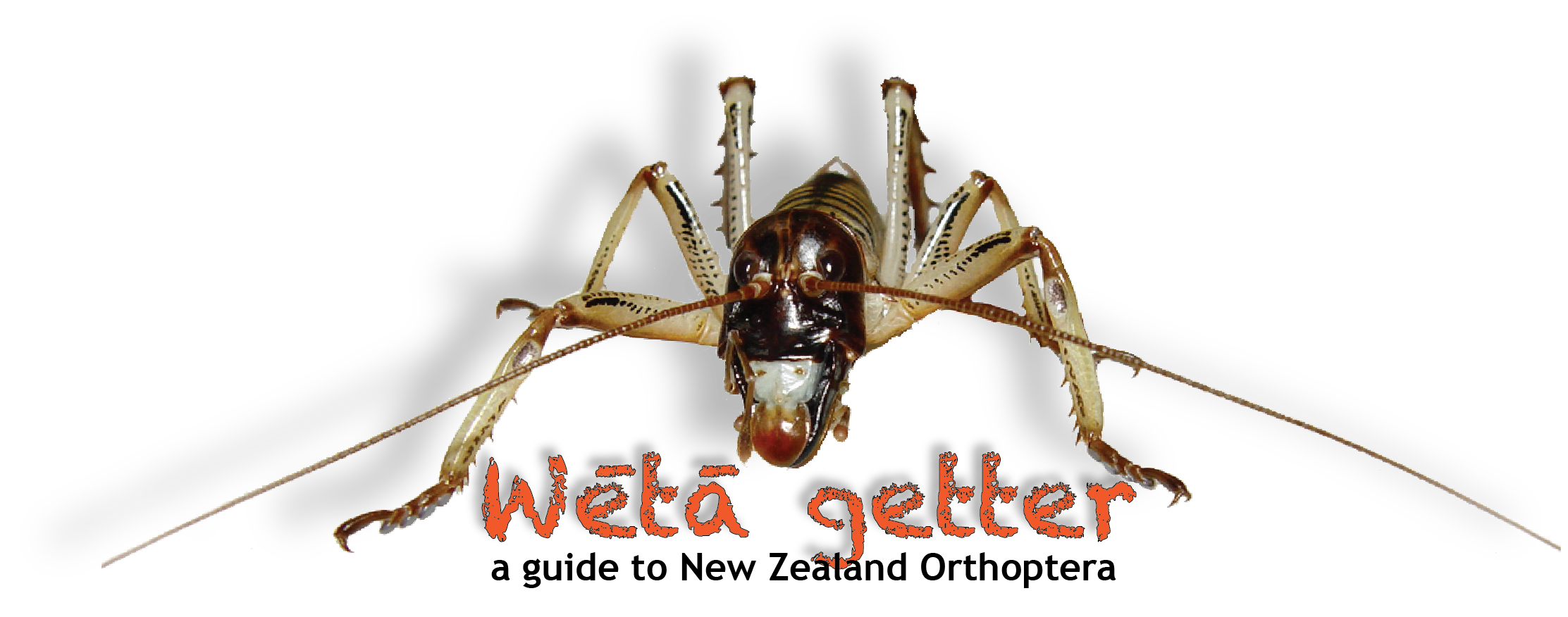Identifying New Zealand grasshoppers to species can be difficult. At most locations at least two species occur together (in sympatry). Variation in shape and size between males and females, juveniles (there are 5 or 6 instars) and adults, adds to confusion. Often the least informative of traits for identification are the most apparent, namely colouring and patterning. Many species are highly polymorphic in terms of colour with variation with many variants of the same species visible in the same population .
Identification can be simplified by reducing the number of plausible species for a location using the distribution maps. Then, confirm whether you have adult or juvenile by seeing if the tegmina (fore wings) overlap and obscure the hind wings; if they do you have an adult. Note that all species of the endemic New Zealand grasshopper genera have reduced wings; a short tab extending a little beyond the thorax.
The abdomen of adult females terminates in a short ovipositor consisting of four stout, pointed valves, the dorsal pair are larger and more prominent from above than the others. Adult males have a stumpier bodies; shorter and less tapered than females. The male abdomen usually has a rounded subgenital plate with a prominent flat 'lid' (epiproct) visible from the dorsal side. The outline of this epiproct is helpful for species identification (but only the males). The other structure that is helpful for identifcation of both sexes is the pronotum (the shield that covers the sides and top of the thorax). |

